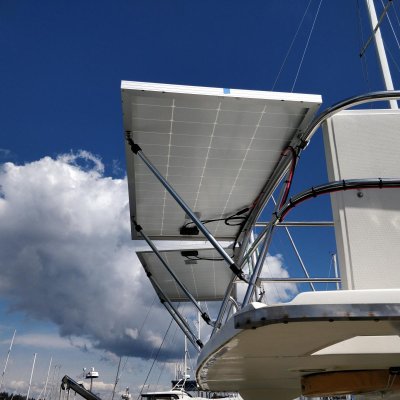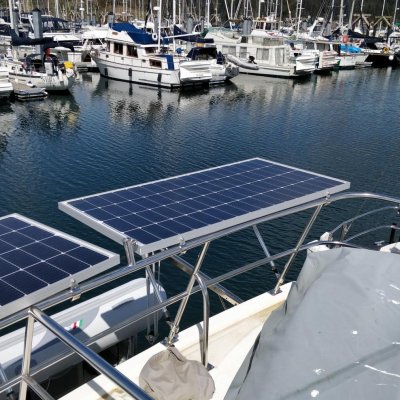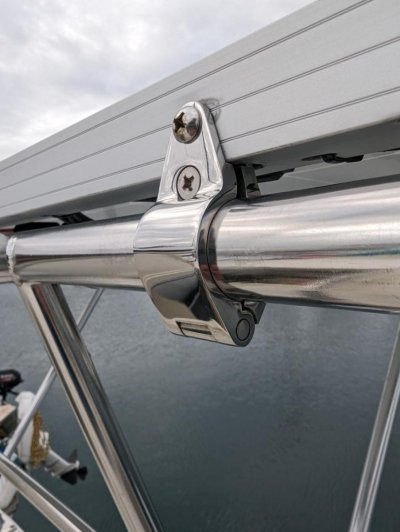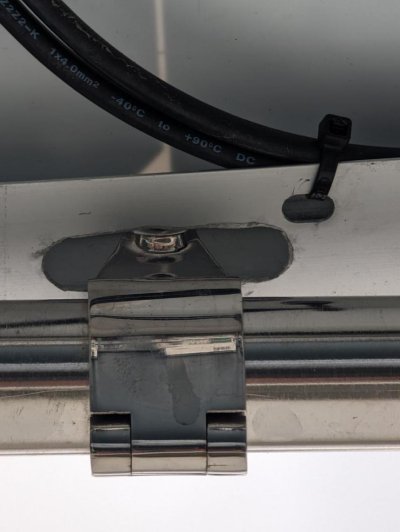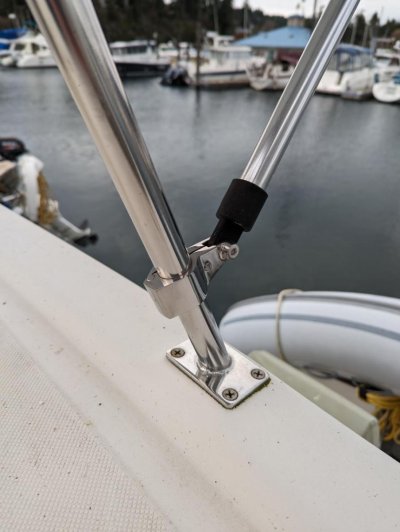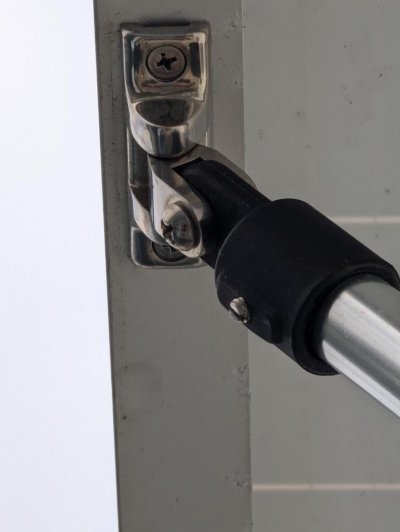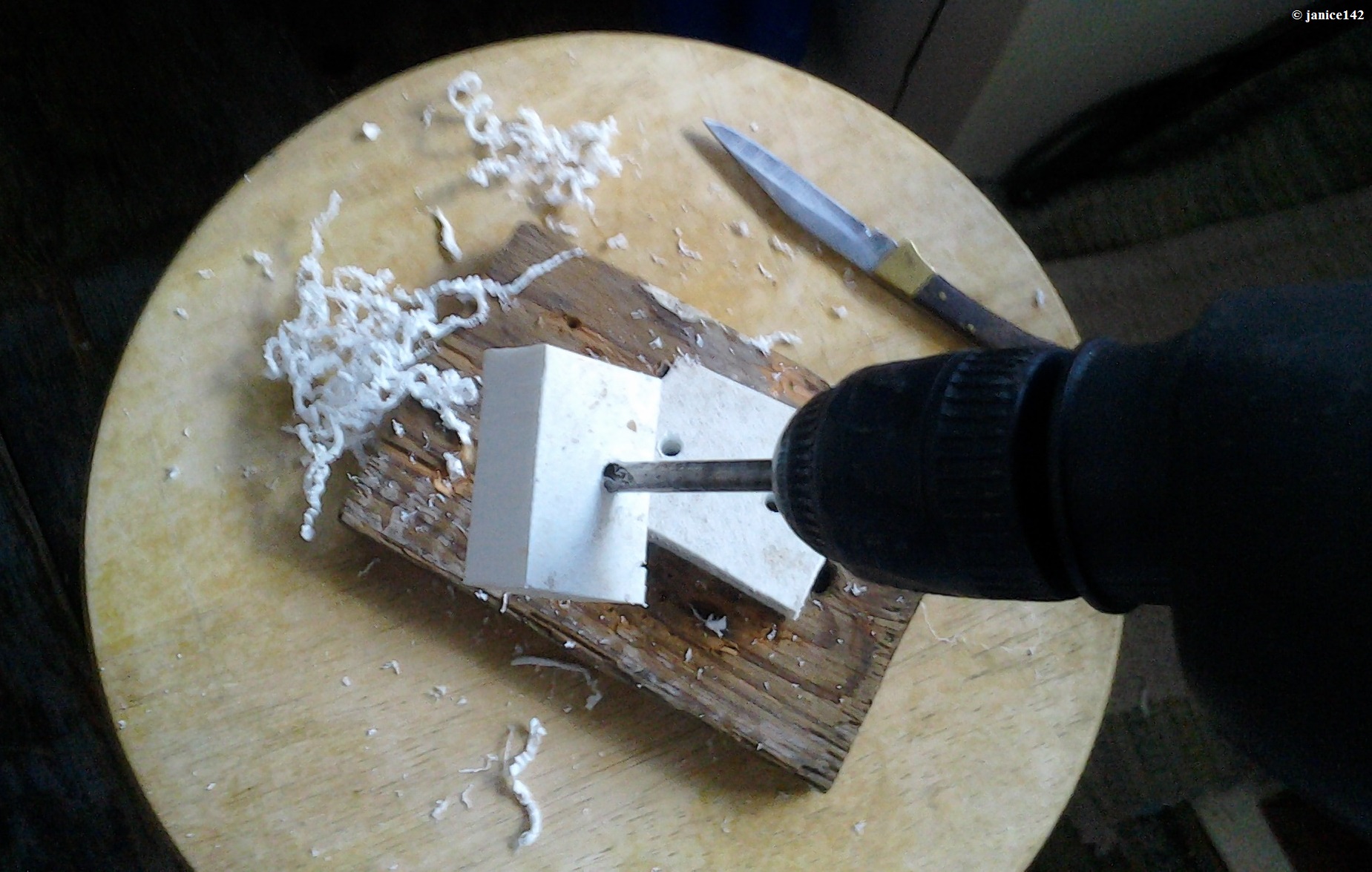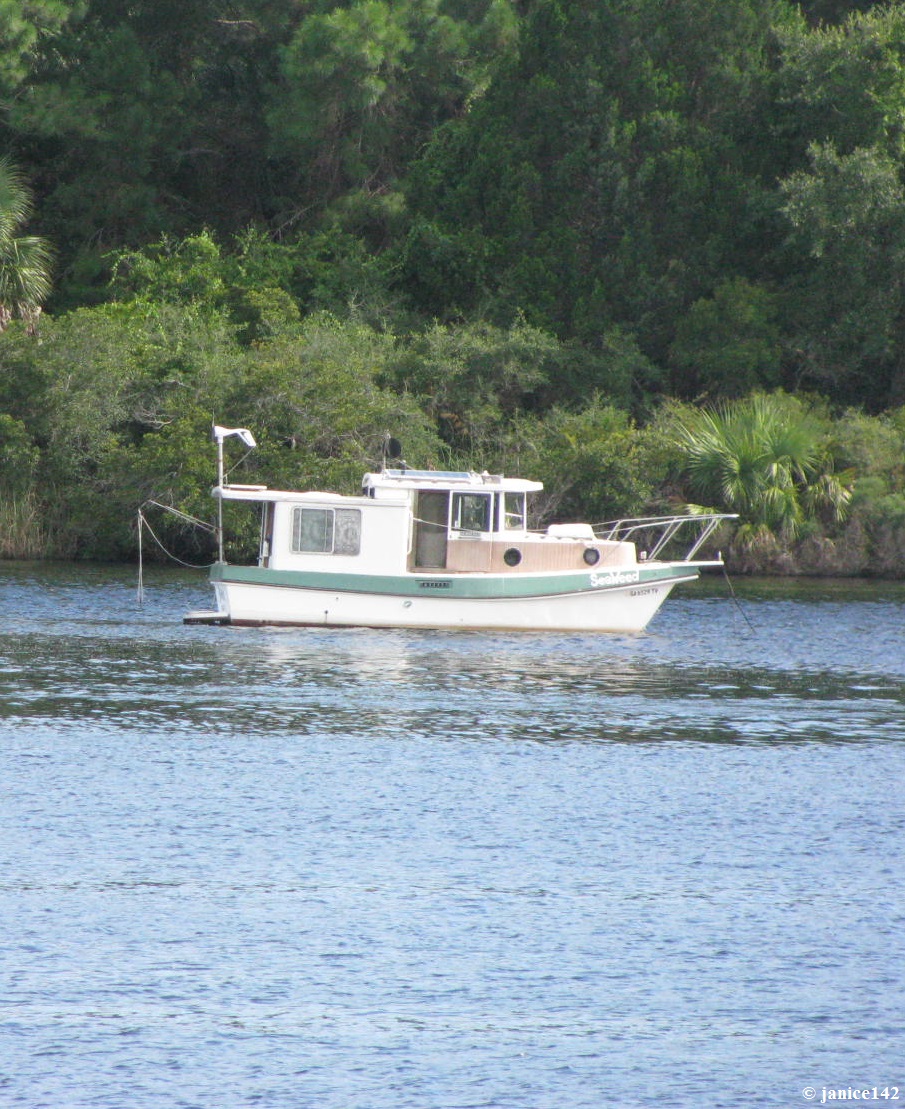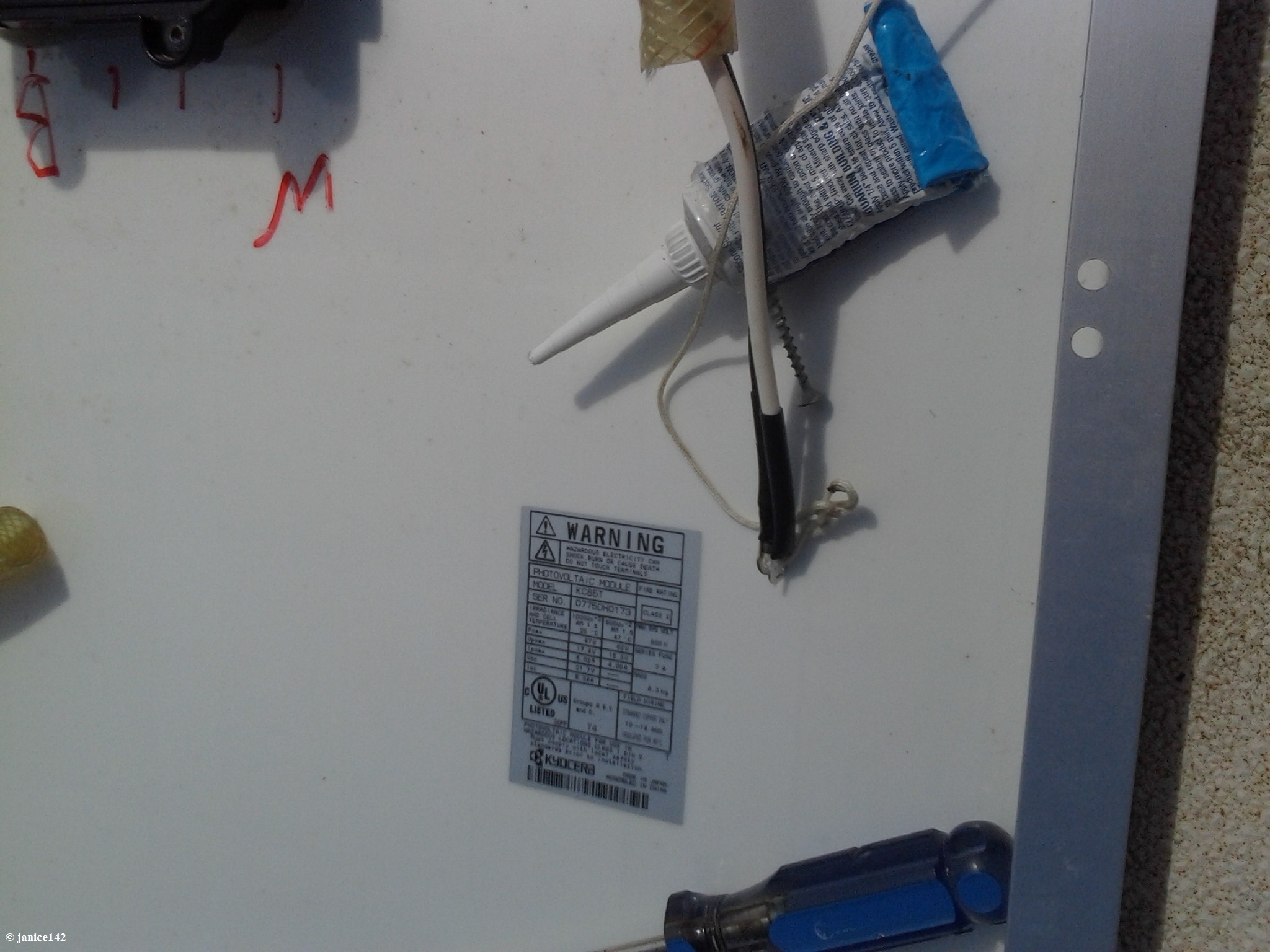Zoar
Senior Member
i plan to install four 300 WATT panels above my mid deck. going to fabricate frame using 1 inch stainless steel msrine grade tubing and S/S elbows and clamps mounting to the exusting 1 inch S/S railing. I'll be sure to post pics and method once i get into it.
I did a food truck with eight 300 watt panels and did my off grid solar system at my home so I have some experience with mounting solar panels ... and solar chargers, inverters etc. I don't have nor do I want a GENERATOR on our trawler, however, i want abundant reliable power. 16 years living off grid eith solar as my only electric energy source makes me hsppy and gives me the confidence to do this on our trawler.
I did a food truck with eight 300 watt panels and did my off grid solar system at my home so I have some experience with mounting solar panels ... and solar chargers, inverters etc. I don't have nor do I want a GENERATOR on our trawler, however, i want abundant reliable power. 16 years living off grid eith solar as my only electric energy source makes me hsppy and gives me the confidence to do this on our trawler.
Last edited:

